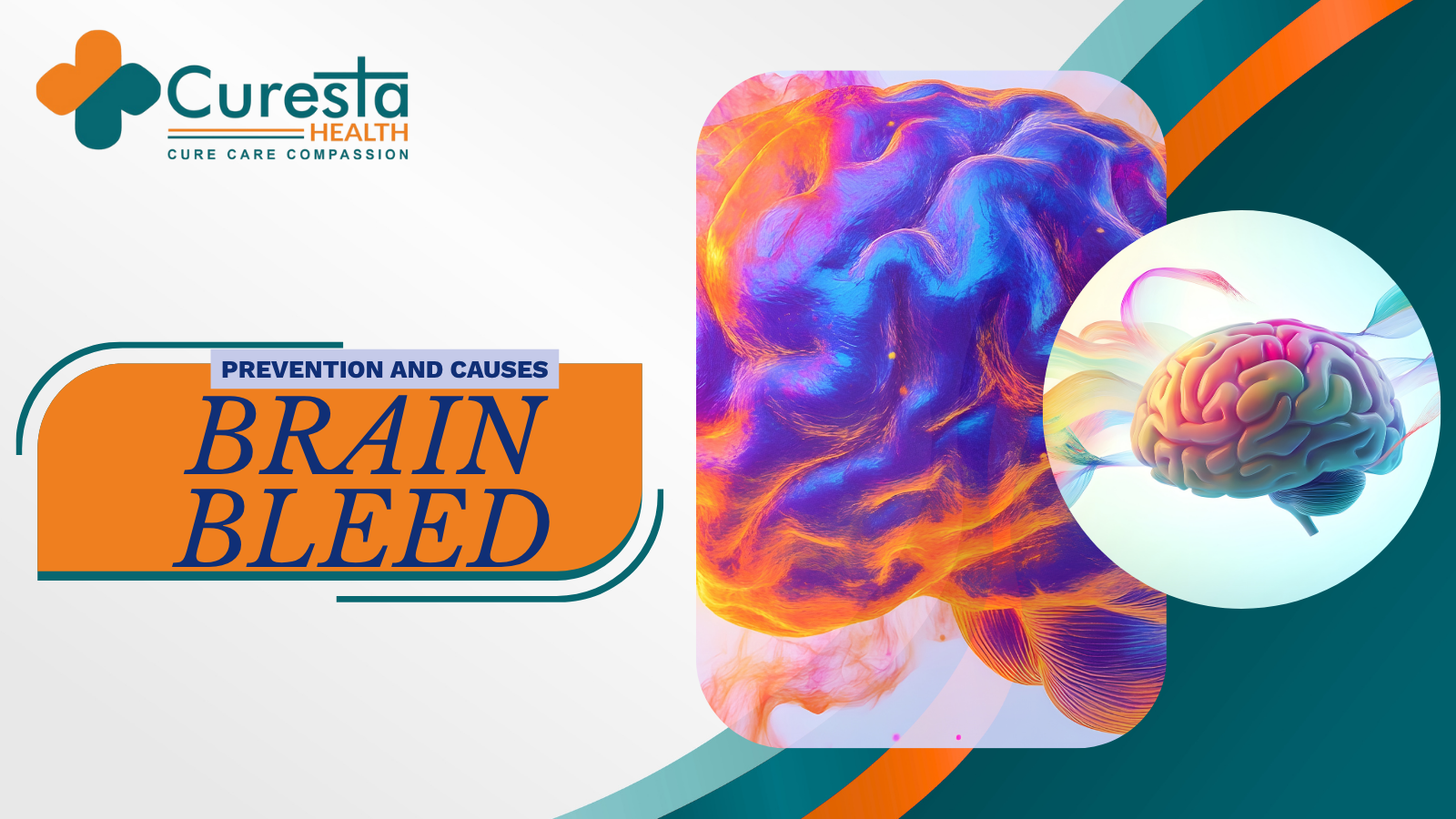



A brain bleed, also known as a brain haemorrhage, is a serious medical condition that can be life-threatening if not addressed promptly. Brain bleeds occur when a blood vessel in or around the brain ruptures, causing blood to spill into surrounding tissue. While it’s often associated with severe trauma or injury, brain bleeds can also be triggered by other underlying health conditions or lifestyle factors.
Understanding the causes of brain bleeds, recognising the symptoms, and taking preventive steps can significantly reduce the risks. This blog is here to help you understand the primary causes of brain bleeds, warning signs, and the steps you need to take to prevent brain bleeds.
A brain bleed occurs when bleeding occurs within or around the brain due to a ruptured blood vessel. The blood can cause pressure on the brain, leading to brain cell damage and a variety of symptoms ranging from mild headaches to life-threatening conditions. The severity of a brain bleed depends on its size, location, and the pressure it exerts on surrounding brain tissue.
Common types of brain bleeds include:
1. High Blood Pressure (Hypertension)
One of the leading causes of brain bleeds is elevated blood pressure. Consistently elevated blood pressure can weaken and damage the walls of blood vessels, making them more prone to rupturing. When blood vessels in the brain burst, it can lead to a brain bleed.
2. Head Injury/Trauma
Traumatic injuries such as falls, car accidents, or sports-related injuries can cause direct damage to the blood vessels in the brain, resulting in a brain bleed. The force of the impact can cause the vessel to rupture, leading to bleeding.
3. Aneurysm Rupture
An aneurysm is a bulge in a weakened part of a blood vessel. If it ruptures, it can lead to a subarachnoid haemorrhage. Brain aneurysms are often present without symptoms but can rupture suddenly, causing severe bleeding in the brain.
4. Blood Vessel Abnormalities (Arteriovenous Malformations)
Some people have abnormal connections between arteries and veins in the brain, called arteriovenous malformations (AVMs). These malformations can rupture and lead to a brain bleed.
5. Medications (Blood Thinners)
Medications such as blood thinners (like warfarin or aspirin) reduce the ability of the blood to clot. While these medications help prevent strokes and heart attacks, they can also increase the risk of bleeding, including brain bleeds, by preventing blood from clotting properly.
6. Alcohol Consumption and Smoking
Chronic heavy drinking and smoking can weaken blood vessels, making them more vulnerable to damage. Excessive alcohol intake also raises blood pressure, contributing to an increased risk of brain bleeds.
7. Blood Disorders
Certain blood disorders, such as haemophilia or platelet disorders, can impair the blood’s ability to clot, increasing the risk of bleeding in the brain.
8. Tumours
Tumours in the brain can put pressure on blood vessels, leading to rupture and bleeding. This can occur in both primary brain tumours and metastatic tumours that spread from other parts of the body.
Recognising the symptoms of a brain bleed is crucial for early intervention. Common symptoms include:
If you or someone else experiences any of these symptoms, seek emergency medical attention immediately.
While not all brain bleeds can be prevented, there are several steps you can take to reduce your risk:
1. Control Blood Pressure (Hypertension Management)
Maintaining a healthy blood pressure is the most critical factor in preventing brain bleeds.
2. Wear Safety Gear and Prevent Head Injuries
To protect your head from trauma, always wear protective gear, such as a helmet, during sports or when riding a bicycle or motorcycle.
3. Avoid Excessive Alcohol Consumption
Drinking alcohol in moderation, if at all, reduces the risk of weakening blood vessels and increasing the chance of trauma.
4. Quit Smoking
Smoking damages blood vessels, increases blood pressure, and contributes to other health conditions that raise the risk of brain bleeds. Quitting smoking significantly improves overall vascular health.
5. Follow Medication Guidelines
If you’re prescribed blood-thinning medications, always follow your doctor’s instructions and regularly monitor your blood clotting levels. Inform your healthcare provider about any changes in your medications.
6. Maintain a Healthy Diet
Consume a heart-healthy diet rich in fruits, vegetables, and omega-3 fatty acids. Foods like salmon, walnuts, and flaxseeds reduce inflammation and improve cardiovascular health, which in turn lowers he risk of a brain bleed.
7. Exercise Regularly
Physical activity helps decrease blood pressure, improve circulation, and strengthen the heart and blood vessels. Routine exercise, such as walking, swimming, or cycling, can reduce your risk of brain bleeds.
Diagnosis and Treatment of Brain Bleeds
If a brain bleed is suspected, your doctor will perform diagnostic tests like a CT scan or an MRI to identify the location and extent of the bleed. In some cases, a lumbar puncture may be performed to check for blood in the cerebrospinal fluid.
Treatment depends on the type and severity of the brain bleed:
Brain bleeds are severe, but with the proper steps, their risk can be minimised. Managing blood pressure, avoiding head injuries, and maintaining a healthy lifestyle are key factors in averting rain bleeds. If you experience any of the warning signs, immediately seek medical attention for the best possible outcome.
If you're experiencing sudden, severe headaches, dizziness, or any other concerning symptoms, don't wait. Curesta Health in Ranchi is here to provide residents of Jharkhand & East India with expert care and prompt diagnosis. Our specialists will assess your symptoms, provide timely intervention, and help prevent life-threatening complications. Book your consultation today!